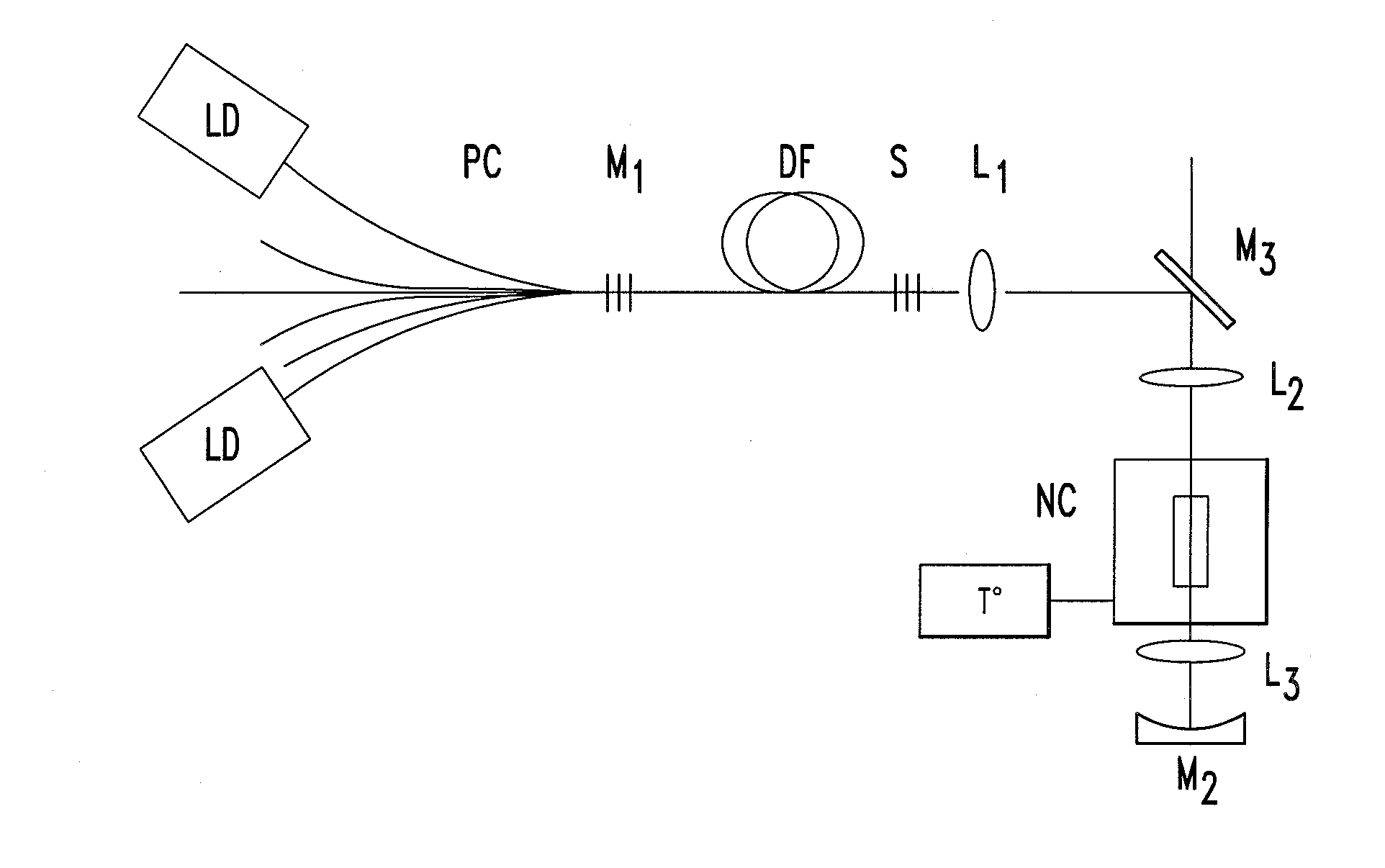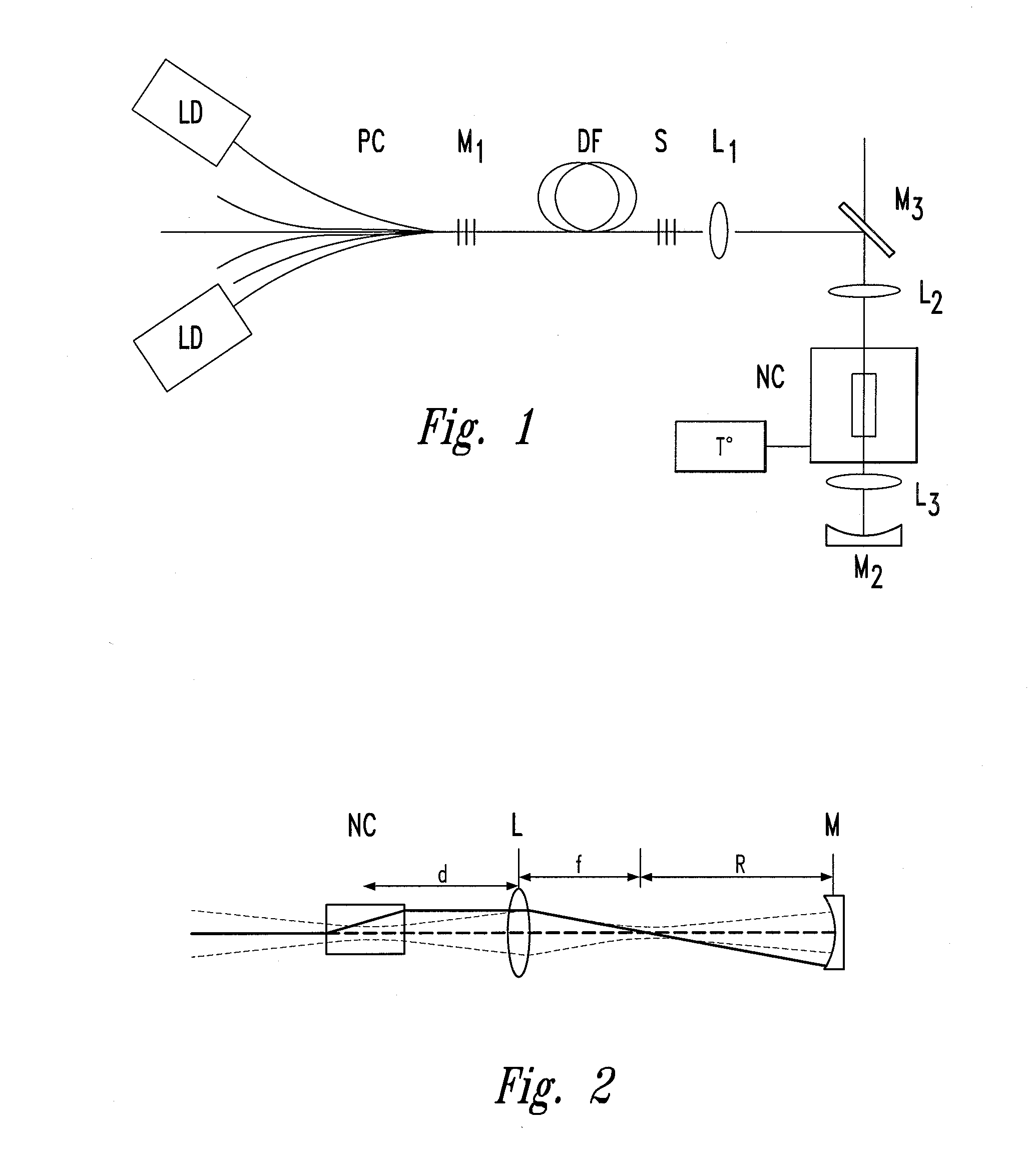Fibre Laser with Intra-cavity Frequency Doubling
a fiber laser and intra-cavity technology, applied in the direction of laser details, wave amplification devices, optical resonator shape and construction, etc., can solve the problems of double the output frequency of a fibre laser, the design of such a laser is complicated and expensive, and the efficiency may be higher. achieve the effect of reducing the walk-off angl
- Summary
- Abstract
- Description
- Claims
- Application Information
AI Technical Summary
Benefits of technology
Problems solved by technology
Method used
Image
Examples
Embodiment Construction
[0026]For frequency doubling a KTP crystal with high conversion efficiency and a possibility to use both polarisations was chosen. KTP crystal (deff=3.88 pm / V) allows using unpolarised (randomly polarised) radiation of an Yb fibre laser even when the generation spectrum is about 1 nm wide. This is four times as good in spectral parameters as compare to periodically poled crystals PPLN (deff=16 pm / V) and PPKTP (deff=5.3 pm / V), which both require linear polarisation for operation. However, the conversion coefficient for KTP is somewhat lower than that for PPKTP (deff2=15 and 28, correspondingly); moreover, when unpolarised radiation is used it becomes twice as large as the one for PPKTP.
[0027]Traditionally, KTP is used for type II phase matching (oe→e or oe→o) within a wavelength range of around 1 μm, in which case even a small spatial walk-off of the extraordinary wave e considerably reduces the efficiency of the second-harmonic generation (see, e.g., J.-J. Zondy, Comparative theory ...
PUM
 Login to View More
Login to View More Abstract
Description
Claims
Application Information
 Login to View More
Login to View More - R&D
- Intellectual Property
- Life Sciences
- Materials
- Tech Scout
- Unparalleled Data Quality
- Higher Quality Content
- 60% Fewer Hallucinations
Browse by: Latest US Patents, China's latest patents, Technical Efficacy Thesaurus, Application Domain, Technology Topic, Popular Technical Reports.
© 2025 PatSnap. All rights reserved.Legal|Privacy policy|Modern Slavery Act Transparency Statement|Sitemap|About US| Contact US: help@patsnap.com


